|
|
|
|
|
|
|
The rather involved tale of the birth of
John appears in the first chapter of Luke. We are told that Zacharias and
Elizabeth are a childless couple: both were ‘stricken in years’ and
Elizabeth was barren.
Zacharias, a priest, was officiating in the temple when an angel appeared and told him that Elizabeth would bear a son, to be called John. At this point Zacharias questioned what the angel had said, pointing out that he and Elizabeth were advanced in years and asking for proof. The angel told him that, because he doubted, he would be struck dumb until the events took place. Elizabeth conceives. After six months, the Virgin Mary visits Elizabeth, the well known and frequently painted event called the Visitation. Luke tells us that the embryonic John 'leapt in the womb' at the presence of the unborn Christ. In due course John was born. Eight days later he was circumcised: Zacharias wrote down his name, and was immediately able to speak.
This narrative may well strike us as a
familiar one. Here we have a ‘type-scene’ in which an angel announces a
miraculous birth to an elderly or barren woman. Miraculous births may or
may not have historical validity, but they are a common theme in many
traditions, marking the births of characters of significance. Examples in
The Old Testament include the annunciation to Abraham, which I have
written about in the section on angels, and the annunciation to Manoah,
the mother of Samson. In the New Testament, the annunciation to Joachim,
father of the Virgin Mary, has many similarities.
|
|
|
The Annunciation to Zacharias |
|
|
|
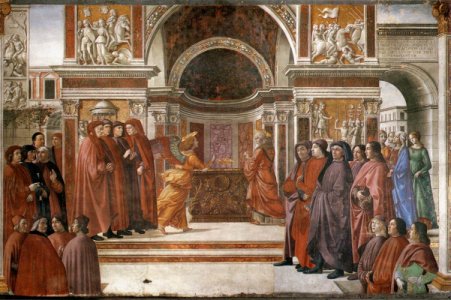 Domenico Ghirlandaio: Capello Tornabuoni, Santa Maria Novella, Florence |
| The Visitation | |
 Fra Angelico: Museo Diocesano, Cortona |
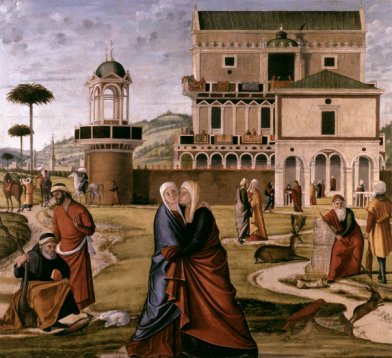 Vittore Carpaccio: Ca d'Oro, Venice |
|
The Birth |
|
 Giusto de' Menabuoi: Baptistery, Padua |
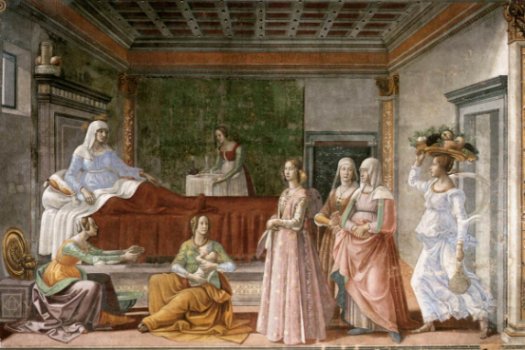 Domenico Ghirlandaio: Capello Tornabuoni, Santa Maria Novella, Florence. |
|
Zacharias writes down the name |
|
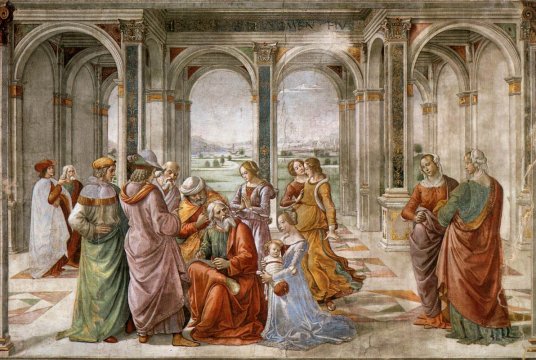 Domenico Ghirlandaio: Capello Tornabuoni, Santa Maria Novella, Florence |
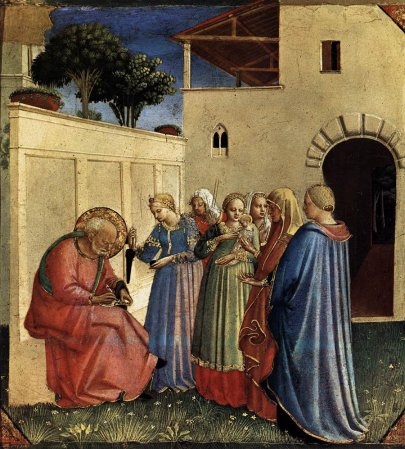 Fra Angelico: Museo di San Marco, Florence |
 :
Giotto: Peruzzi Chapel, Santa Croce, Florence
:
Giotto: Peruzzi Chapel, Santa Croce, Florence